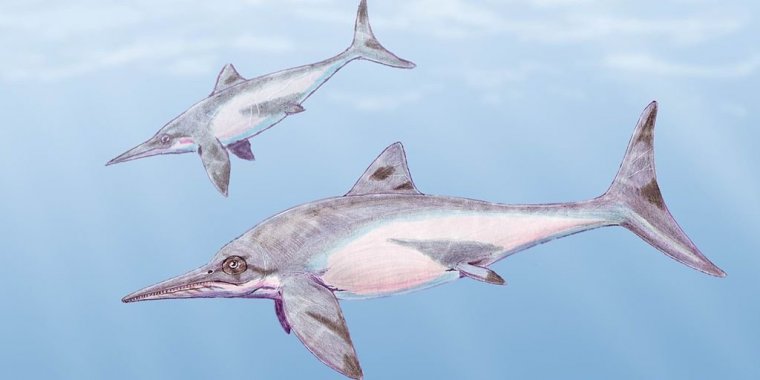| News / Science News |
Sea Monster Swam Oceans 170 Million Years Ago
Voanews | OCTOBER 19, 2016
Scientists are studying the skeleton of an ancient sea monster. It was discovered in Scotland 50 years ago, but it wasn’t until more recently -- using modern fossil extraction methods — that the bones could be pulled out of hard rock. The previously unknown reptile lived in the oceans during the time of the dinosaurs.
The bones of the sea monster are 170 million years old and were discovered in Scotland’s Isle of Skye. Paleontologists are excited by the almost-complete skeleton.
“There’s over 100 bones there, so a whole bunch of the skeleton, and now we get to get down to the fun business of actually studying it, figuring out what it is,” said Stephen Brusatte, a paleontologist at the University of Edinburgh.
What the scientists do know is that the sea monster is more than 4 meters long. It is from a class of ancient marine creatures called ichthyosaurs, which resembled dolphins. The reptile could swim fast, and with its hundreds of cone-shaped teeth, fed on fish and squid.
The scientists hope to gain a better understanding about the creature’s ecosystem and more about the Middle Jurassic period that lasted from about 160 to 180 million years ago. Since so few fossils have been discovered from that age, the sea monster is a spectacular find.
"It’s one of the only good skeletons of one of these ocean reptiles from the middle part of the Jurassic Period. This was a time that was a really interesting moment in evolution. You had all kinds of new groups of dinosaurs and ocean reptiles getting their start, starting to spread around the world,” said Brusatte.
Like other ichthyosaurs, this sea monster faded into extinction 95 million years ago, about 30 million years before the dinosaurs disappeared.
“It looks like it was changes in the oceans, in the chemistry and in the ecology of the oceans, and so you had a long-term willowing away of these ichthyosaurs as they became less and less common, less and less diverse, until they trickled away to extinction, and then that is when groups like sharks and ultimately whales and dolphins moved on in," said the paleontologist.
Sea monsters have often captured people’s imaginations. The skeleton of this one will eventually be put on display for the public to see.
YOU MAY ALSO LIKE






